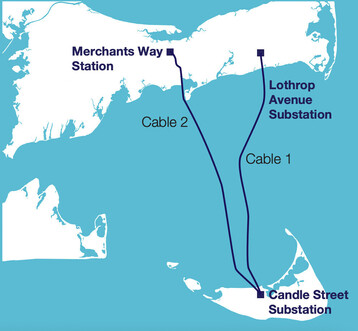At Energy Panel, Experts Discuss Nantucket's Peak Electricity Demand, And How To Mitigate It
JohnCarl McGrady •

Nantucket’s peak energy demand this summer was 54 megawatts, roughly in line with the recent 55 megawatt peak reported by the town in a letter last spring, according to National Grid product lead Steven Hopengarten. That’s slightly down from the all-time peak of 57 megawatts, hit in August of 2022, that National Grid reported to Bluedot Living last year.
Hopengarten’s comments came at a well-attended panel on the history and future of power on Nantucket at the Nantucket Atheneum, hosted by the Nantucket Chamber of Commerce and ACK Smart Solar Energy.
Hopengarten reported on National Grid’s efforts to offset the peak, which include smart meters intended to help customers reduce their electricity use and common-sense recommendations to businesses, such as closing their windows on hot days while running air conditioning.
“There are certain things that we could be doing and should be doing,” Hopengarten said. “There’s a ton of addressable capacity here.”
The data comes as Nantucket continues to grapple with the possibility of having to install a third undersea cable to bring electricity from the mainland, which may be needed sooner than expected as energy demand on the island soars. But at least this year, the peak didn’t jump.
The island’s first 28-mile undersea electric cable to the mainland was installed beneath Nantucket Sound back in 1996 when the island’s peak electricity usage was just 20 megawatts. The $27 million cable installed by National Grid that year ran from Nantucket to Harwich on Cape Cod with a capacity of 36 megawatts. It brought to an end the era in which the island generated its own electricity at the former downtown Nantucket Electric Company power plant along the waterfront that featured six massive diesel generators. As Nantucket’s electricity usage continued to grow, a second undersea cable was installed in 2006 to meet the demand. This one connected the island’s substation on Candle Street to Kalmus Beach in Hyannis. The $41 million, 38-megawatt cable was paid for through a National Grid surcharge on Nantucket electric bills.

For his part, Hopengarten thinks that roughly 10 percent of the demand can be mitigated.
“What the ceiling is is hard to say because a lot of it is so behavioral driven, but for me, my instinct is I think it’s probably like 10 percent is addressable,” Hopengarten said.
The panel, moderated by ACK Smart Solar director of sales Tobias Glidden and Chamber of Commerce executive director Peter Burke, also featured Longroad Energy CEO Paul Gaynor and Island Energy chief operating officer Dave Fredericks, who previously ran the Nantucket Electric Company’s downtown power plant, and was a vice president of National Grid.. Hopengarten works on National Grid’s energy transition solutions team.
Burke, who managed questions during the question and answer portion of the panel, dodged the most controversial energy-related issues facing Nantucket, including the Vineyard Wind offshore wind turbine blade break, recent power outages in the Surfside area, and the power failure during last year’s Christmas Stroll. As Nantucket’s energy supplier, National Grid has responded to those outages with ongoing projects to upgrade underground cables and infrastructure in those areas.
During the panel, Glidden suggested that the town may be pursuing more solar projects soon.
“The town…is looking at a number of other larger solar projects,” Glidden said. “Nothing super massive, but I think there is an opportunity to work with the town.”
In 2019, National Grid installed a bank of new Tesla battery storage units on the island that were intended to replace Nantucket’s backup power source: two aging 6-megawatt diesel generators. The new 6-megawatt / 48-megawatt-hour lithium-ion Tesla system was paired with a 15-megawatt generator and power control house on National Grid’s three-acre property east of Nantucket Memorial Airport. At the time, the installation was the largest of its kind in the Northeast.